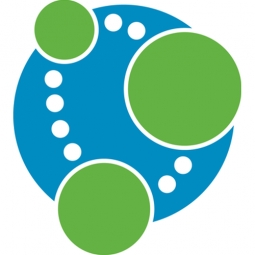
Technology Category
- Analytics & Modeling - Computer Vision Software
- Application Infrastructure & Middleware - Data Visualization
Applicable Industries
- Healthcare & Hospitals
- Mining
Applicable Functions
- Product Research & Development
Use Cases
- Clinical Image Analysis
- Traffic Monitoring
The Customer
Novartis
About The Customer
Novartis is a global healthcare company based in Basel, Switzerland that provides solutions to address the evolving needs of patients. It is one of the largest pharmaceutical companies by both market capitalization and sales. The Novartis Institutes for BioMedical Research comprise the innovation arm of Novartis, with 6,000 researchers at six locations around the globe. The company has amassed decades of data on how various compounds affect protein targets, and uses an automated process that captures high-content image data showing how a particular compound has affected an entire cell culture.
The Challenge
Novartis, a global healthcare company, was faced with the challenge of managing and making sense of a vast amount of data. The company had decades of data on how various compounds affect protein targets, with about a billion data points in total. This historical data was critical but sparse compared to the granular data currently being collected. Novartis uses an automated process that captures high-content image data showing how a particular compound has affected an entire cell culture, generating terabytes of phenotypic data. The challenge was to combine this historical data with the burgeoning phenotypic data and place it within the larger context of ongoing medical research from around the world. The team also wanted to combine its data with medical information from NIH’s PubMed, which contains about 25 million abstracts from some 5,600 scientific journals.
The Solution
Novartis decided to create a knowledge graph stored in Neo4j, and devised a processing pipeline for ingesting the latest medical research. Text mining is used at the beginning of the pipeline to extract relevant text data from PubMed. That data is then fed into Neo4j, along with Novartis’s own historical and image data. The data pipeline populates the 15 kinds of nodes that were devised to encode the data. The next phase fills in the relationship information that links the nodes together. The team identified more than 90 different relationships. Novartis uses Neo4j graph algorithms to traverse the graph and identify a desired triangular node pattern linking the three classes of data together. Graph analytics not only find relevant nodes in the desired triangular relationship, but also employ a metric the team designed to gauge the associated strength between each node in each triangle.
Operational Impact
Quantitative Benefit

Case Study missing?
Start adding your own!
Register with your work email and create a new case study profile for your business.
Related Case Studies.

Case Study
Hospital Inventory Management
The hospital supply chain team is responsible for ensuring that the right medical supplies are readily available to clinicians when and where needed, and to do so in the most efficient manner possible. However, many of the systems and processes in use at the cancer center for supply chain management were not best suited to support these goals. Barcoding technology, a commonly used method for inventory management of medical supplies, is labor intensive, time consuming, does not provide real-time visibility into inventory levels and can be prone to error. Consequently, the lack of accurate and real-time visibility into inventory levels across multiple supply rooms in multiple hospital facilities creates additional inefficiency in the system causing over-ordering, hoarding, and wasted supplies. Other sources of waste and cost were also identified as candidates for improvement. Existing systems and processes did not provide adequate security for high-cost inventory within the hospital, which was another driver of cost. A lack of visibility into expiration dates for supplies resulted in supplies being wasted due to past expiry dates. Storage of supplies was also a key consideration given the location of the cancer center’s facilities in a dense urban setting, where space is always at a premium. In order to address the challenges outlined above, the hospital sought a solution that would provide real-time inventory information with high levels of accuracy, reduce the level of manual effort required and enable data driven decision making to ensure that the right supplies were readily available to clinicians in the right location at the right time.

Case Study
Gas Pipeline Monitoring System for Hospitals
This system integrator focuses on providing centralized gas pipeline monitoring systems for hospitals. The service they provide makes it possible for hospitals to reduce both maintenance and labor costs. Since hospitals may not have an existing network suitable for this type of system, GPRS communication provides an easy and ready-to-use solution for remote, distributed monitoring systems System Requirements - GPRS communication - Seamless connection with SCADA software - Simple, front-end control capability - Expandable I/O channels - Combine AI, DI, and DO channels

Case Study
Driving Digital Transformations for Vitro Diagnostic Medical Devices
Diagnostic devices play a vital role in helping to improve healthcare delivery. In fact, an estimated 60 percent of the world’s medical decisions are made with support from in vitrodiagnostics (IVD) solutions, such as those provided by Roche Diagnostics, an industry leader. As the demand for medical diagnostic services grows rapidly in hospitals and clinics across China, so does the market for IVD solutions. In addition, the typically high cost of these diagnostic devices means that comprehensive post-sales services are needed. Wanteed to improve three portions of thr IVD:1. Remotely monitor and manage IVD devices as fixed assets.2. Optimizing device availability with predictive maintenance.3. Recommending the best IVD solution for a customer’s needs.

Case Study
Underground Mining Safety
The goal was to produce a safety system to monitor and support underground mining operations; existing systems were either too simple (i.e. phone line) or overly complex and expensive, inhibiting deployment, and providing little-to-no support in event of an accident. Given the dangerous nature of the mining work environment and the strict regulations placed on the industry, the solution would have to comply with Mine Safety and Health Administration (MSHA) regulations. Yet the product needed to allow for simple deployment to truly be a groundbreaking solution - increasing miner safety and changing daily operations for the better.

Case Study
HaemoCloud Global Blood Management System
1) Deliver a connected digital product system to protect and increase the differentiated value of Haemonetics blood and plasma solutions. 2) Improve patient outcomes by increasing the efficiency of blood supply flows. 3) Navigate and satisfy a complex web of global regulatory compliance requirements. 4) Reduce costly and labor-intensive maintenance procedures.




